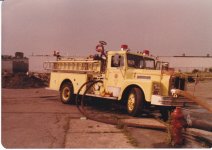Yes, "nfdcanman", many of us DO REMEMBER Proposition 2 1/2.
Many fire companies were closed down in Massachusetts, including in the City of Boston.
As I remember, Boston's Engine 43 and Ladder 20, located right around the corner from a Howard Johnson's with it's parking lot referred to as "whip city", as many Sparks as they were called, aka Buffs, hung out listening to their scanners on the low band of 33.74 mhz with the big antennas, referred to as "whip antennas".
With busy fire departments like the FDNY Budget Crisis and Massachusetts Prop 2 1/2 closing fire companies, several other cities, particularly in the northeast, followed with closing fire companies.
This certainly DID have an affect on more injuries and deaths from fires
Perhaps "grumpy grizzly" will add to this, or tell us more about those days just before Proposition 2 1/2.

